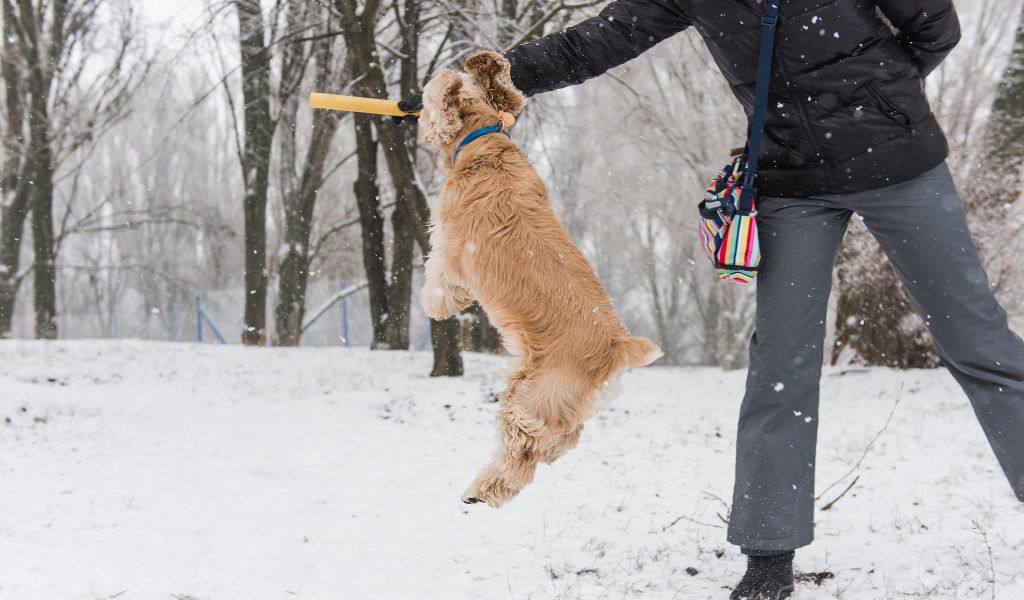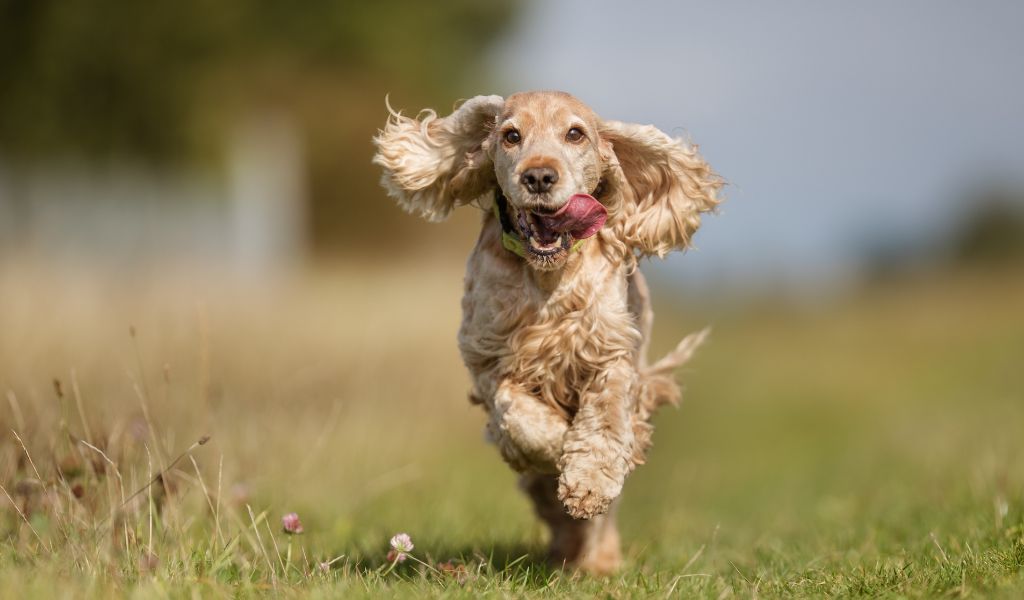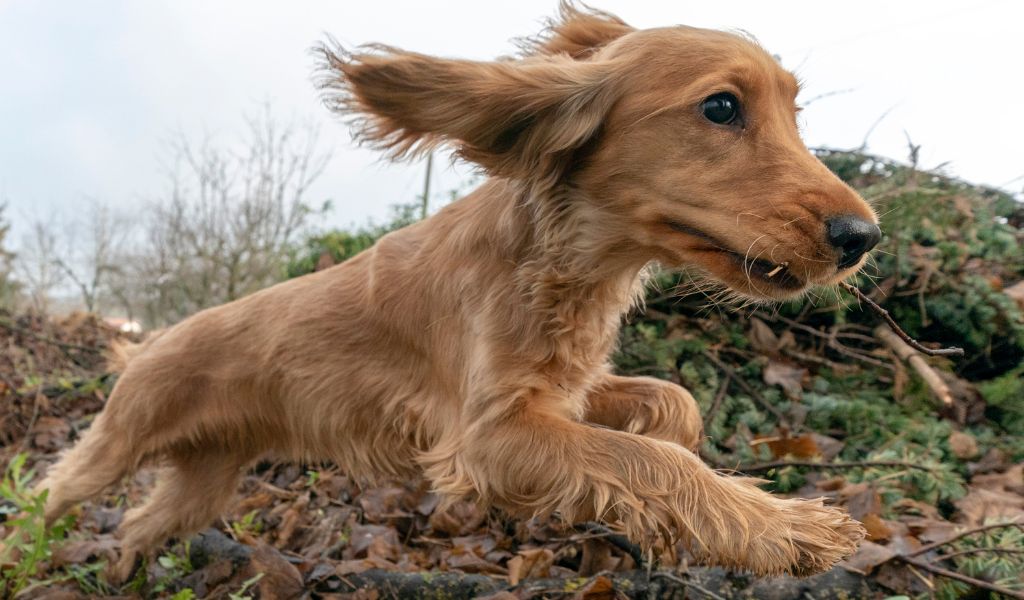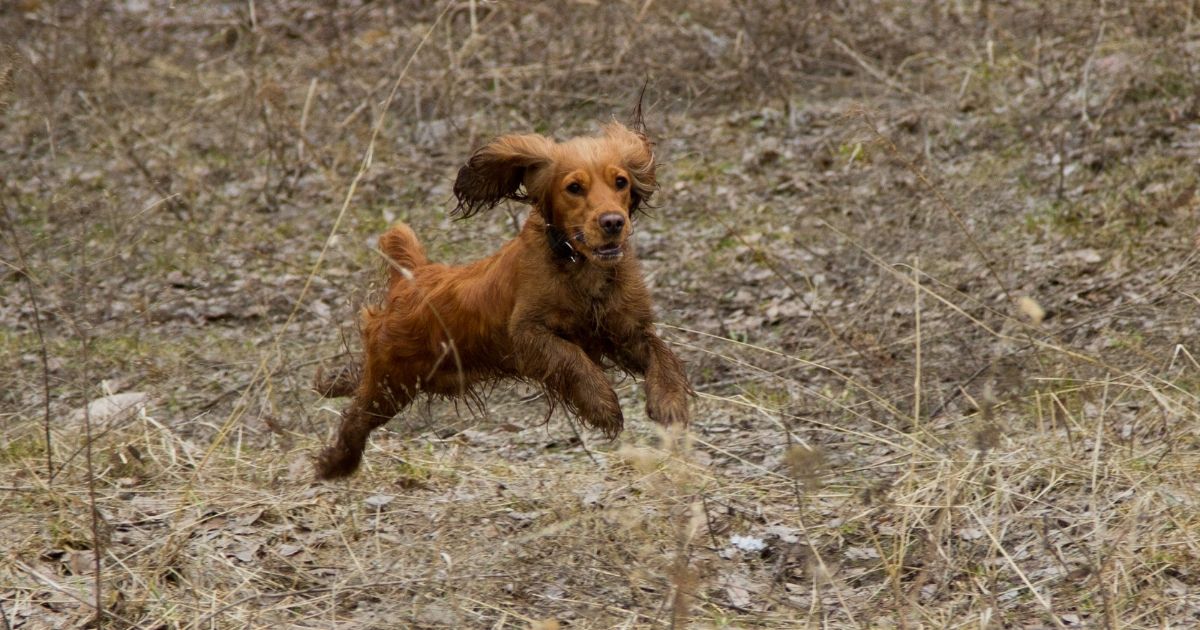Spaniels are sociable dogs that enjoy company and, in the main, meeting new people.
They can also be excitable and often will jump up when you return home or when you have visitors.
The trick to getting a spaniel to stop jumping up is to behave calmly when you return home and to tell your guests to do the same. Ignoring the dog’s efforts to get attention can be one of the quickest and easiest ways to stop him from jumping. Only give him attention when he has calmed down.
How to stop a dog from jumping up
- Ignore the Jumping:
- Do not acknowledge your dog when it jumps up. No eye contact, talking, or touching.
- Turn away or walk away if necessary, until the dog calms down.
- Reward Calm Behaviour:
- Once the dog is calm and has all four paws on the ground, reward it with attention or treats.
- This reinforces the idea that calm behaviour brings positive outcomes.
- Consistent Training:
- Consistency is key. Ensure all family members and visitors respond to jumping in the same way.
- Mixed signals can confuse the dog and hinder training progress.
- Use Commands:
- Train your dog to respond to commands like ‘sit’ or ‘stay’.
- Use these commands to prevent jumping before it starts, especially in situations where your dog usually jumps.
- Exercise and Mental Stimulation:
- Ensure your dog gets adequate physical exercise and mental stimulation.
- A well-exercised dog is less likely to exhibit overexcited behaviour.
- Manage Greetings:
- Keep greetings low-key to avoid overexcitement.
- If necessary, keep the dog on a lead during greetings to better control the situation.
- Training Aids:
- Consider using tools like a lead or head halter to control jumping during training.
- Always use such tools under professional guidance and as a temporary measure.
- Teach an Alternative Behaviour:
- Teach your dog an incompatible behaviour, like sitting, which it can’t do while jumping.
- Reward the dog for sitting when someone enters the room or approaches.
- Professional Help:
- If jumping persists, consider enlisting the help of a professional dog trainer.
- They can provide personalised advice and training strategies.
- Patience and Positive Reinforcement:
- Use positive reinforcement like praise, petting, or treats to reward good behaviour.
- Be patient. Training takes time and every dog learns at its own pace.
Why do spaniels jump up?
Spaniels are really affectionate dogs that enjoy being around their owners and families. Often they show this affection by jumping up in excitement.
When your spaniel is happy to see you, or your visitors, he will often display this by repeatedly jumping up.
He doesn’t know that jumping could cause injury or damage ( he is just a dog ), and that for some people jumping up can be frightening.
Jumping up is his way of showing that he is pleased to see you and is also a way to get your attention and show that you are pleased to see him too.
What you do not do to stop a spaniel from jumping up
There are all sorts of ‘experts’ that give advice on how to stop a dog from jumping up.
Most of this advice uses punishment type strategies to try and deter the dog.
You may have heard of people making these types of recommendations which include:
Kneeing the dog in the chest
Spraying him with water or something like lemon juice
Shouting at the dog
Hitting him with a rolled up newspaper
Squeezing his front paws
Standing on his back paws
Pushing the dog backwards so that he falls over

All of these ‘suggestions’ are very very wrong and are excessive ways of dealing with spaniel that is just being friendly and trying to say ‘hello, welcome home‘.
Look at it from the dog’s perspective.
You come home, he is so happy to see you that he jumps up in joy and then…whack! – a thump on the nose or a knee in the chest.
No wonder so many spaniels and other dogs end up confused and nervous wrecks.
Ignore the spaniel training experts that have never trained or owned a spaniel and become more dog like in your thinking.
What are the risks of a spaniel jumping up?
Most spaniels are medium sized dogs, weighing anywhere between 12 to 22 kgs.
The force of a spaniel jumping is enough to knock over a healthy adult is he/she is off balance or unprepared.
The risks increase with the young and elderly and infirm, with injuries easily possible from falls, scratches or bumping into objects as a result of being pushed by the dog.
If a fall does occur then the dog can confuse this as an act of play and this can result in the person being jumped on, nipped, licked or otherwise.
Some people are also simply afraid of dogs and a jumping spaniel, whether friendly or not, can be upsetting.

A simple way to stop a spaniel from jumping up
Often, when you come home and are greeted by an excited spaniel, you also become excited.
Your excitement encourages the dog to become more excited and he jumps, happy to see and welcome you.
This often becomes more exaggerated if you have children who find a welcoming spaniel a delight.
If you behave in an excited fashion, then your spaniel will become excited, making the problem of jumping up worse and more likely to occur.
If your spaniel jumps at you when you come home then the easy solution is to take a calm and quiet approach.
Pay little attention to your dog, when he jumps up at you, step backwards and try to avoid any contact with him.
Turn your back on him and behave as though he is not there.
You need to be in charge and avoid all his efforts for attention.
Then, as soon as he calms down, acknowledge him and tell him he is a ‘good dog’.
If you keep some doggy treats in your pocket then, as soon as he is calm, you can reward him with a tasty treat.
This will take time and will need consistency from all of the family and visitors too.

Don’t use punishment – kneeing the dog in the chest, hitting him etc will only confuse him and make him more determined to win your favour by more jumping
Stay calm when returning home, even if your spaniel is going ballistic to get attention
Keep children calm and advise visitors to ignore the dog when they visit
Instead of using force, simply step backwards when your spaniel jumps, try to avoid any contact
Ignore him and avoid eye contact until he calms down.
When he finally settles, reward him with strokes or an edible treat.
Keep things on your terms, you only reward and acknowledge him when he is calm.




